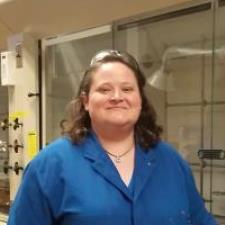
Chris C. answered • 12/05/20
Enjoying (??) Chemistry ... yes, REALLY!!
Hi, Elizabeth,
This is an unusual application of the Ideal Gas Law where: PV = nRT (P = pressure of the gas, V= volume of the container, n = "amount" (typically moles or millimoles) of gas, R = ideal gas constant, and T = temperature of the system in Kelvin). Since P, R, and T are unchanged, this becomes:
V1/n1 = V2/n2
You are provided with V1 (110.0 L), and n1 (6.30 mol), so you first have to solve for the new "amount" (n2). This is simply n2 = n1 - (10.0 mmol/hr x 52 hours). In this case, substituting in the value for n1: n2 = 6.30 mol - 520 mmol, or 6.30 mol - 0.52 mol, or finally n2 = 5.78 mol. Note that 1 mol = 1000 mmol.
To determine V2, we can now plug these values into the original equation as so:
110.0L/6.30 mol = V2/5.78 mol
V2 = (110)(5.78)/6.30)
V2 = 100.9 L The volume of the balloon after 52.0 hours is 100.9 liters.
'Hope that helps,
Chris




